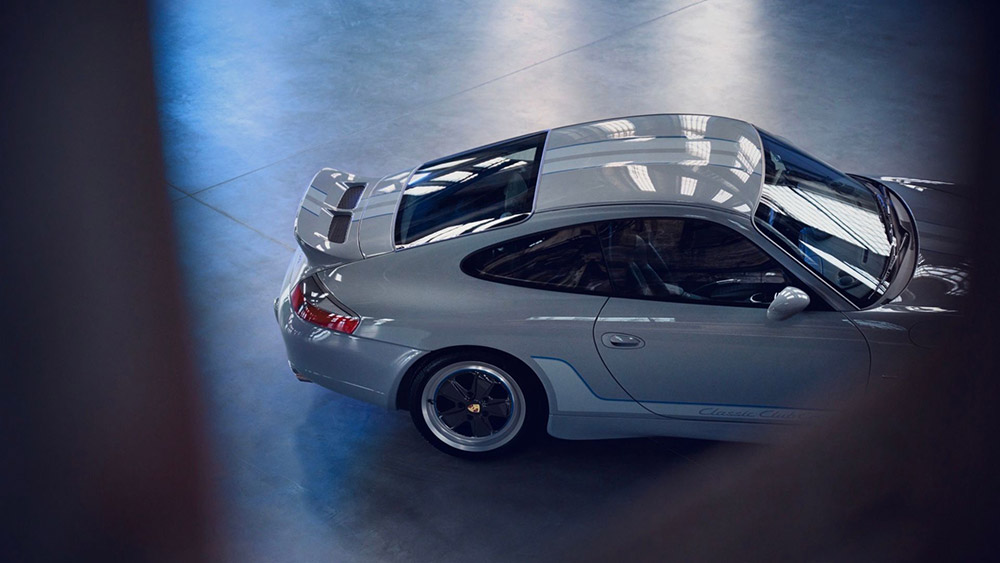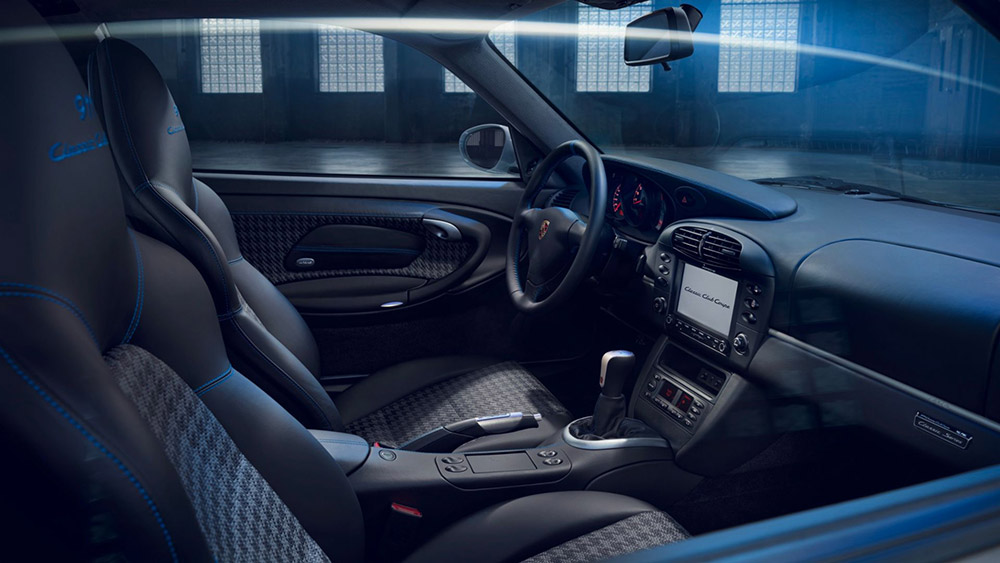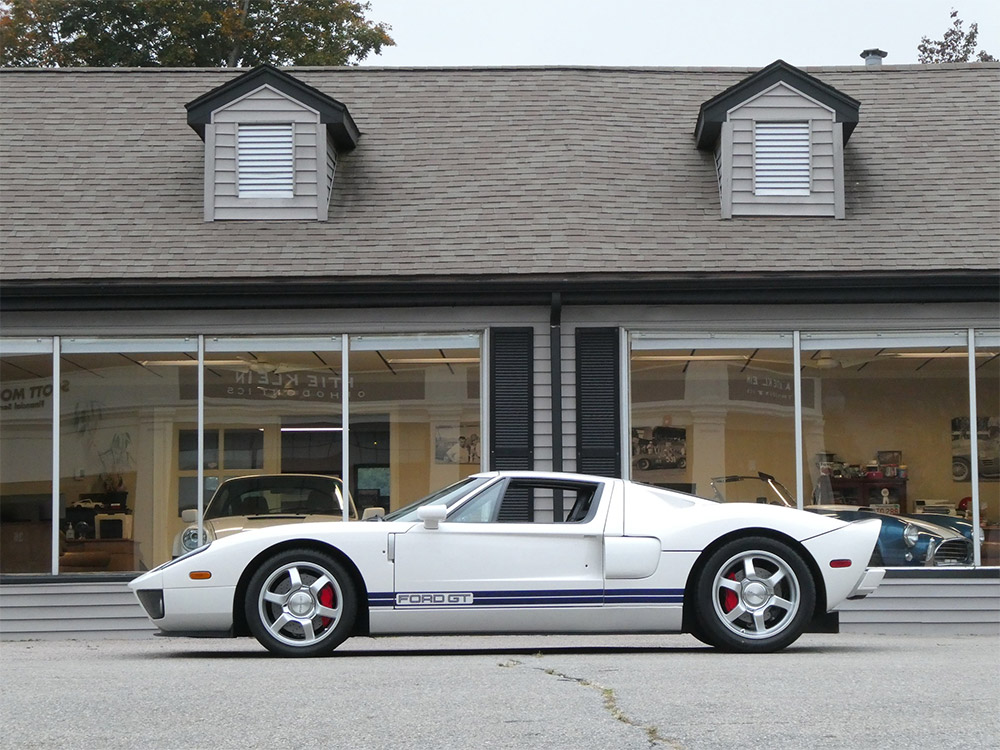Introducing the Porsche 911 Classic Club Coupe, a one-of-one restoration project completed by Porsche Classic in collaboration with the Porsche Club of America (PCA). That this is a unique car will not surprise anyone who sees it, but a “No. 001/001” badge on the dashboard underscores its scarcity. A ducktail spoiler reminiscent of the 1972 911 Carrera RS 2.7, a double-bubble roof, 18-inch forged aluminum Fuchs wheels and unique paint combine to create a striking resemblance to the Type 997 911 Sport Classic. Those looks are only part of the story.

“We wanted to take a different route – to base this unique project on a car less obvious – a modern classic – that would appeal to a slightly different group of enthusiasts,” said Tom Gorsuch, President of the Porsche Club of America (PCA). “The fact that the finished Porsche 911 Classic Club Coupe looks so cohesive, with the changes appearing so natural, is what’s really incredible about this challenging project.”
Based on a 1998 911 Carrera, the chassis, brakes and engine in this sports car are both taken from the 996.2 911 GT3, the first such model homologated for sale in the U.S. Accordingly, the naturally aspirated 3.6-liter flat-six generates 381 horsepower. The donor car, which PCA Executive Director Vu Nguyen found in a state of neglect in Colombia, Virginia, traveled to the Porsche Classic workshop near the main plant in Stuttgart-Zuffenhausen where it was originally built. There, it went through a complete restoration including total disassembly, and strengthening of the body-in-white using both original and newly developed parts.

“The Type 996 is unjustly overshadowed by the other 911 ranges. That’s why we were happy to choose it as the basis for demonstrating all the things we can do with Porsche Classic and the recently expanded Sonderwunsch program of Porsche AG. In 2009, the 911 Sport Classic, a limited series of 250, had already generated worldwide interest. However, this special model was not sold in the U.S. With this one-off, we’ve now managed to bring a similarly exciting vehicle concept to the U.S. as well.” – Alexander Fabig, Head of Individualization and Classic
Exterior
Styling and design plans were finalized in parallel with the restoration process to keep the project on schedule. Input from the PCA and Porsche Classic in both Germany and the United States gave direction to the final car.
Experts from Porsche Individualization, Porsche Classic, and Style Porsche drew up proposals and regularly discussed them with the PCA over the course of the project, which took a total of two and a half years to complete.

The result was given a sneak preview at The Amelia in March. Sport Grey Metallic paint including stripes in light Sport Grey Metallic with Club Blue outlines run the length of the hood, roof and spoiler to reference the Type 997 911 Sport Classic. Accents in light Sport Grey along the sides of the car also feature “Classic Club Coupe” script with an accent line in Club Blue.
The double-dome roof is also a detail with a motorsport connection. Tall racing drivers used to bulge the roofs to make enough headroom for wearing a helmet – the modern roof design alludes to this. The Style Porsche design concept 911 Panamericana from 1989, the Carrera GT and the 911 Sport Classic also had a roof shaped like this. Today, the double-dome roof is a classic design feature of many limited series from Porsche Exclusive Manufaktur and the 911 GT models. The fixed rear spoiler made of glass-fiber-reinforced plastic takes the shape of the legendary “ducktail” of the 911 RS 2.7 from 1972. The third brake light is built into it. The model designation “Classic Club Coupe” appears in the middle between the tail lights.

In tandem with the roof design and spoiler – both hand-built for the project – the paint scheme creates a unique appearance rooted in Porsche heritage. In particular, the roof is a reference to the past when race drivers would dome the roof of their car to accommodate additional headroom for helmets.
Interior
It might seem difficult to find a more extensive example of what is possible through the Sonderwunsch program until viewing the Classic Club Coupe interior.
Custom door sill plates call out the model name, while the interior, primarily upholstered in black leather with Slate Grey accents and a perforated Alcantara headliner. Most notably, the seat centers and door panels feature woven black and grey leather in a twill Pepita pattern. Club Blue stitching decorates much of the interior including the steering wheel and “911 Classic Club Coupe” embroidery on the headrests. That logo is also visible in the tachometer, flanked by two grey stripes and lines in Club Blue. Finally, the Classic Club Coupe is equipped with Porsche Classic Communication Management Plus, which offers modern infotainment conveniences including Apple CarPlay and Google® Android Auto as well as preparation for Sirius XM. By special request, the start screen on this model shows “Classic Club Coupe.”

Bringing such an extensive project to life also required support from many parts of the company. The most intensive adaptation work took place on the special features of the 911 Classic Club Coupe: the double-bubble roof and the fixed rear spoiler. This meant the part of the body between the rear window and ducktail had to be handmade. The biggest challenge in the interior, on the other hand, was to match new materials with the geometry of the Type 996 interior.
The technical modifications to the 911 Classic Club Coupe were evaluated by a team of experts from Porsche Individualization and Classic, Porsche Cars North America and the Porsche Development Center in Weissach to make sure the vehicle remained in compliance with applicable U.S. regulations.

Vehicle dynamics validation testing also factored into the process. Standing in for the valuable one-off, a test vehicle went through extensive trial runs at test sites including Weissach in Germany, Nardò in Italy and Idiada in Spain. These included endurance runs at top speed and wind tunnel testing. However, once the verification program was completed, the test vehicle was dismantled – ensuring the final product is truly a one-off. The overall vehicle was approved after a road test by the Porsche Development Centre in Weissach.







